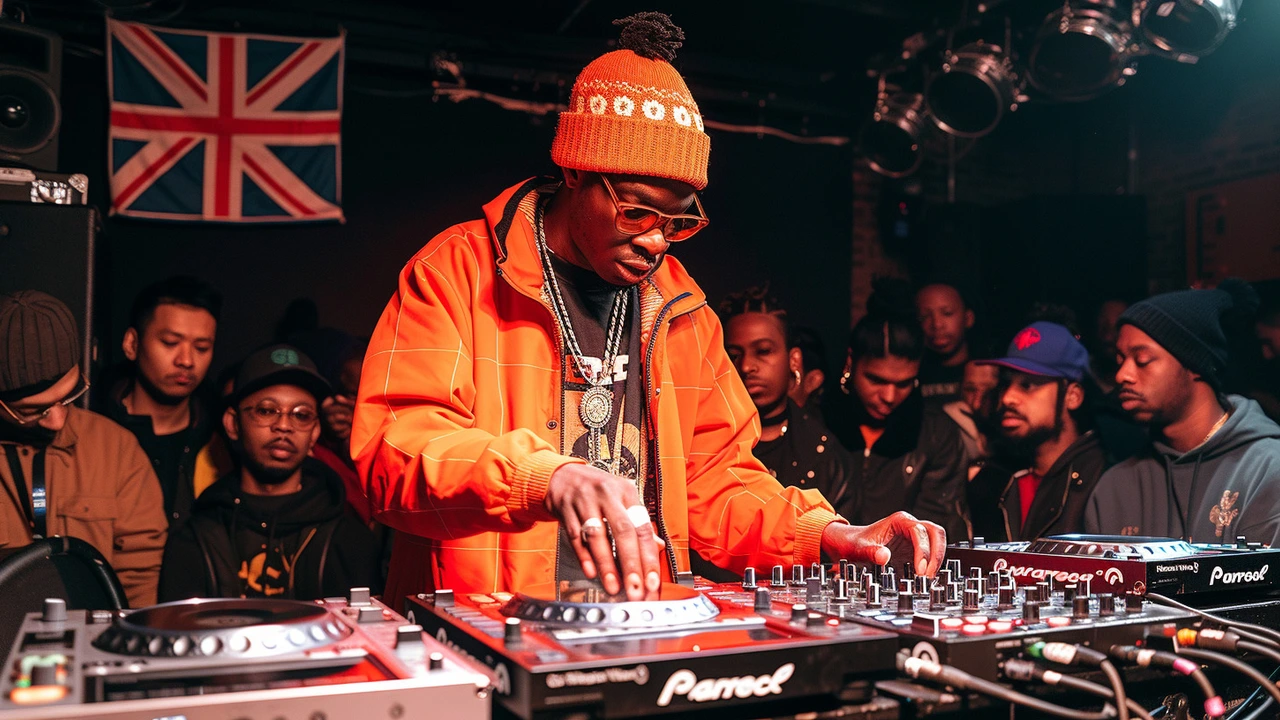Unlocking the Rhythms: The Origins of Fusion
The fusion of electronic music with traditional beats isn't a phenomenon that sprang up overnight. It started as a subtle undercurrent within the electronic music scene, where innovative artists began experimenting with beats that had roots in cultural traditions far older than the genre itself. This wasn't just about using new sounds for the sake of novelty; it was a genuine exploration of the rich tapestries of global musical traditions, brought into the modern era with synthesizers and looping software. As this trend gained momentum, it became clear that it was more than just a fad. It was a movement towards creating a universal music language, one that could transcend boundaries and bring listeners closer to the myriad cultures of the world.
One can trace the origins of this fusion back to artists who travelled extensively, absorbing the sounds and rhythms of cultures around the globe. They saw potential in blending the electronic beats they worked with, with the traditional music they encountered. This not only enriched their sound palette but also offered listeners a gateway to discovering traditional music they might never have encountered otherwise. From the intricate rhythms of African drums to the melodious strains of Asian string instruments, these artists weaved a sonic landscape that was both fresh and familiar.
Artists Leading the Movement
Several artists have been pivotal in driving the fusion of electronic music with traditional beats. Artists like Bonobo, Thievery Corporation, and Nicola Cruz have stood out for their ability to blend electronic music with traditional elements in a way that is both respectful and innovative. Bonobo, for example, has been known for his seamless integration of a variety of traditional instruments and vocals into his tracks, creating layered, complex compositions that are a feast for the ears. Thievery Corporation takes a more global approach, incorporating influences from Brazilian bossa nova, Indian classical music, and Middle Eastern sounds, among others, into their downtempo electronic beats.
Nicola Cruz is another artist who has made significant contributions to this genre. His work focuses on South American indigenous and Afro rhythms, melded with modern electronic production techniques. The result is music that is not only deeply rooted in tradition but also accessible to the modern listener. Cruz's compositions serve as a bridge between past and present, inviting audiences to explore the rich musical heritage of South America through a contemporary lens. These artists, among others, are not merely producing music; they're storytellers, weaving narratives that span centuries and continents, all within the medium of sound.
The Global Impact on Audiences
The fusion of electronic music with traditional beats has had a profound impact on audiences worldwide. It's introduced listeners to cultural rhythms they might not have encountered otherwise, fostering a deeper appreciation for global musical traditions. This blending of genres has also encouraged a more inclusive approach to music, where the focus is on the universality of rhythm and melody rather than the distinctions of genre or origin.
Moreover, this fusion has given rise to vibrant music communities that bring together fans from diverse backgrounds. Music festivals dedicated to showcasing this blend have become cultural melting pots, affirming the universal appeal of these sounds. The shared experience of discovering and enjoying this fusion music has the power to bridge cultural divides, creating a sense of global solidarity among listeners.
Cultural Exchange and Preservation
One of the most significant aspects of this fusion is its role in cultural exchange and the preservation of traditional music. By integrating these sounds into electronic compositions, artists are ensuring that traditional rhythms are not lost to time. Instead, they are given new life and introduced to younger generations in a format that is accessible and engaging. This process not only highlights the richness of world cultures but also encourages a dialogue about the importance of preserving musical heritage.
This trend also fosters genuine cultural exchange, as artists collaborate across borders, blending their musical traditions to create something truly unique. These collaborations are a testament to the unifying power of music, proving that creativity knows no bounds and that cultural differences can be a source of inspiration rather than division.
Looking Ahead: The Future of Music Fusion
As we look to the future, it's evident that the fusion of electronic music and traditional beats is not just a passing trend but a burgeoning genre in its own right. Advances in technology will continue to play a crucial role in facilitating this fusion, offering artists increasingly innovative tools to blend sounds in ways previously unimaginable. At the same time, the global appetite for cultural diversity in music shows no signs of waning, suggesting that this fusion will only grow more popular in the years to come.
The ongoing success of this fusion genre hinges on respecting the origins of the traditional sounds and ensuring that the cultures they come from are acknowledged and valued. As long as artists continue to approach this fusion with sensitivity and creativity, the future looks bright for the continued evolution of this mesmerizing musical blend.






